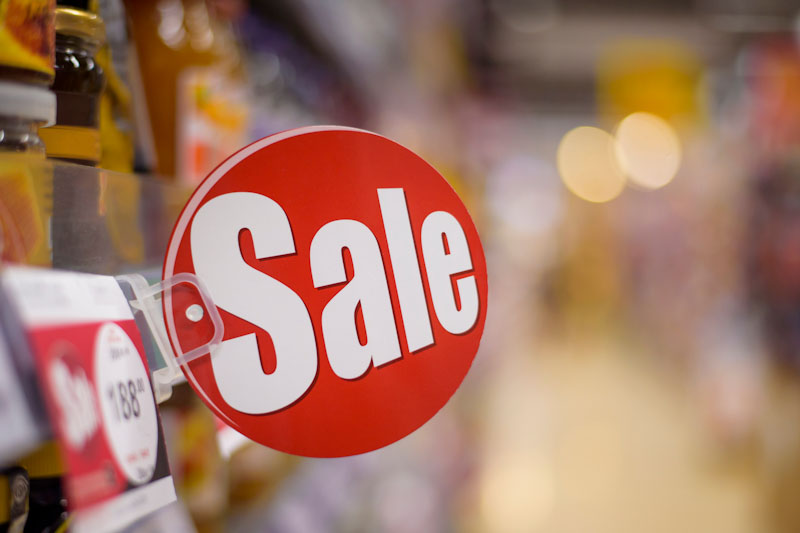As we all know, food prices have been going up faster and faster. That’s actually not all that surprising, considering that inflation is still up. Food is generally one of the leaders in inflation, at least as far as everyday expenses are concerned. College tuition has gone up faster, but that’s not technically an everyday expense. I’m sure there are other things which have gone up faster than food; but they’re not included in the consumer price index (CPI).
People complain about food prices rising all the time; but few do anything about it. By doing something, I’m not referring to picketing or cutting down their purchases; what I’m referring to is finding a way to use the situation to their advantage, as much as possible.
As preppers, we are all accustomed to stockpiling food. That seems to be the number one sign of someone becoming a prepper. But I have to wonder how many of us learned the lesson of the pandemic, at least where it comes to food. Many of us didn’t even bother getting into our food stockpiles during the pandemic, preferring to complain about the shortages in the stores, while we had full shelves sitting at home.
We might finally be pretty much out of the woods, at least as far as shortages in the grocery store are concerned. But that doesn’t mean that we’re going to be out of the woods as far as food prices go. I don’t see any reason to believe that food prices will be going down, but rather expect them to keep climbing. Fortunately, the grocery stores are still using sales to get us into their doors and those sales give us some good opportunities, if we take advantage of them.
For many of us, the question is just how to take advantage of them. The foods that are going on sale aren’t shelf-stable foods that can just be stuck in our survival stockpile. They’re fresh foods, specifically fresh fruit, meats and seafood. Something has to be done with them, before we can even think of calling it survival food.
The obvious solution is to preserve as much of this additional food as possible. Most of us have looked at food preservation and maybe even have done a little bit of it; but there’s a difference between preserving a little bit of food for the future and making a major operation out of it. If we want to get the most bang for our buck, we’re probably going to need to start a pretty major food preservation project.
Before You Begin
When my wife came to me, talking about her personal struggle with not wanting to let the food sales slip by, without taking advantage of them, she wasn’t sure what to do. We don’t normally do a lot of canning and dehydrating of food, although I have done so in the past. She was thinking we might need to start upping our food preservation game, and wasn’t sure about what direction to take. That had always been my area.
Let me say here that we do one thing rather different than most of the preppers I know; we have a fairly good amount of frozen food. In addition to our normal freezer, we also have a good-sized chest freezer, mostly filled with meat. Those chest freezers are actually very energy efficient and I have two generators, along with 55-gallons of gasoline to keep them running, in the case of a short-term disaster (for us, that means a hurricane). I’m not particularly worried about all that frozen meat going bad, because I can preserve it before I run out of gasoline, if I need to.
But with both freezers full, she didn’t know what to do. So, the first thing I asked her, was how much there was in the freezers, which was never going to be used? Most of us have things like that. I’ve cleaned out old bread, cake frosting, turkey carcasses that never got turned into soup, and food that we decided we didn’t like; but never got rid of. Just getting rid of those unnecessary items will free up space in anyone’s freezer.
What to Focus On
Assuming you’ve already built your food stockpile, how should you take advantage of these sales? How can you get the most bang for your buck?
Start by looking for the best sale prices you can find, as measured by how much of a discount you’ll be getting. Meat should be priority number one; but don’t ignore good prices on fruits either, as they preserve well. Few of us have much fruit growing in our gardens, focusing instead on vegetables. If what’s on sale isn’t your favorite cut of meat, ask yourself what you can do with it, to make it useful to your family. If you can’t come up with a way that you’re sure you’ll use it, don’t buy it.
There are some things you can do, with just about any cut of meat. One of my favorites is to chop it up and make chili out of it. Chili not only cans well, but can be canned without any beans in it; just the meat and the sauce. Then, when it’s time to use it, you cook up the beans and mix the canned chili with the beans, stretching your chili. You can also cut up meat and slow cook it, before
Another good use of cuts of meat that you wouldn’t normally use, is to dehydrate it, turning it into jerky. Most of the commercially manufactured jerky you find in the grocery store is made from cuts of meat that won’t be found in the butcher’s case. Since jerky is supposed to be tough anyway, using tough cuts, that would never be turned into steaks, makes a lot of sense.
Develop a Two-Pronged Strategy
If there’s anything I learned through the pandemic, it was to redefine what I considered to be a disaster and when I would go into survival mode. I had been focused on disasters for so long, that my expectation was that any disaster would come with the force of a hurricane, announcing its presence in no uncertain terms. That announcement would make it clear that I would need to shift from day-to-day living, to survival mode.
There’s only one thing… it didn’t happen that way. Although we all knew when the first COVID-19 case was diagnosed in the United States, that wasn’t yet considered an emergency. It took some time for the various states’ governments to decide they would need to take some action, and then even more time for them to decide what action to take.
Just a momentary aside here; under our system of government, it was the states who had to take action to protect their citizens from the pandemic, not the federal government. The president had no authority to declare shutdowns, state governors did. The federal government’s involvement was more supportive, providing information to the state governments.
More than anything, what told people that we were in the midst of an emergency was the great toilet paper shortage of 2020. When stores started running out of things, people began to realize that they were in trouble. But even then, many preppers didn’t get into their survival stockpiles, not realizing the full gravity of the situation.
This has caused me to take a new approach to my survival stockpile. I made the decision to start using things from it, while keeping track of everything I used. That way, I would know what to replace. This ended up being a pretty good strategy, as we went through a couple of years of shortages, with new items missing from the store shelves every month. While that problem seems to have largely passed, I have kept operating the same way, motivated by the high prices.
What that means is that I’ve developed a strategy of living in a more or less constant survival mode. My regular pantry and my survival pantry are now one and I use things as I need, always restocking what I take. The current situation fits into that well, as I take advantage of whatever sales the various stores in my area are having, to rebuild my stockpile and even go beyond what I had before. We never get low enough on anything, that I would say we’re not ready for an emergency; but at the same time, I can’t take you to a room in my house and point out a stockpile, saying “This is only used for emergencies.”
The big thing this two-pronged approach to my food and other critical supplies is doing for me, is saving my family money. we are spending less, overall, than we would be, if we were just buying what we need. More than anything, our savings is on meat; but I’m also saving money on paper goods, gasoline and a host of other items that we use on a daily basis. At the same time, I’m keeping ready for the next real emergency that comes along.






















































































For those newbies and others who are unaware: The supermarkets have papers in the front that have specials–especially in the front, where the “loss-leaders” are. Loss-leaders are items that the supermarket loses money, in order to gain the customers who will buy other items at price. Just buy the loss-leaders. The stores won’t know the difference!